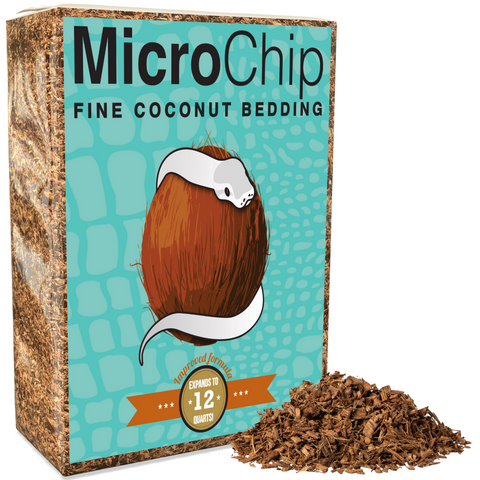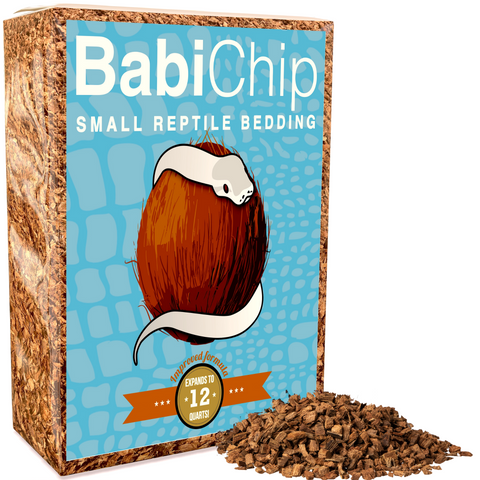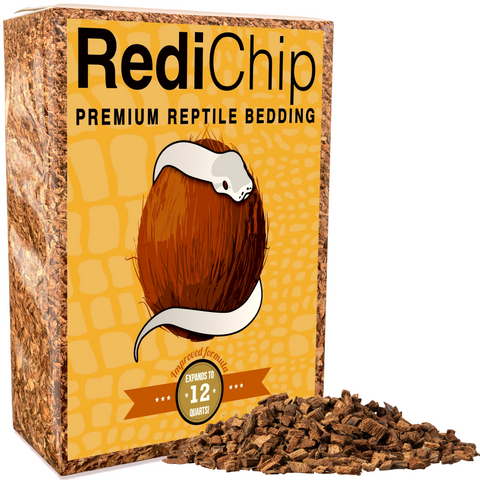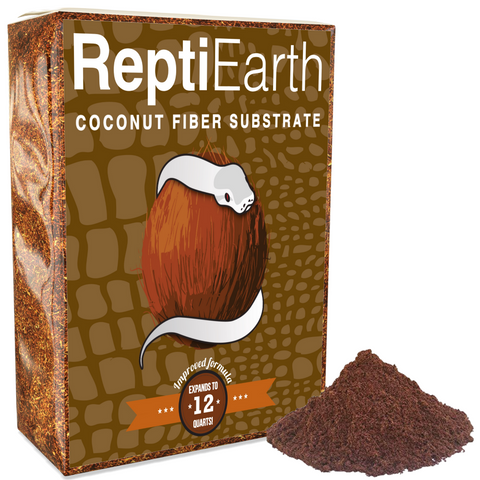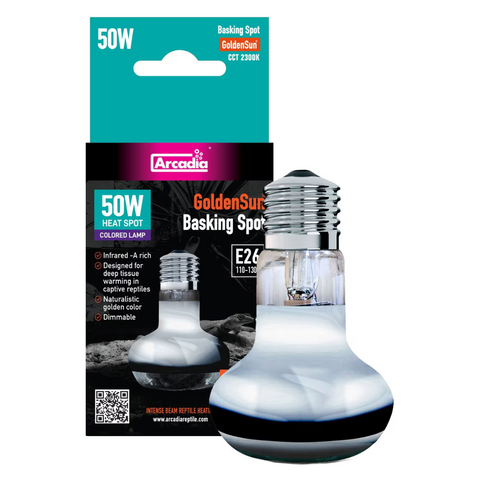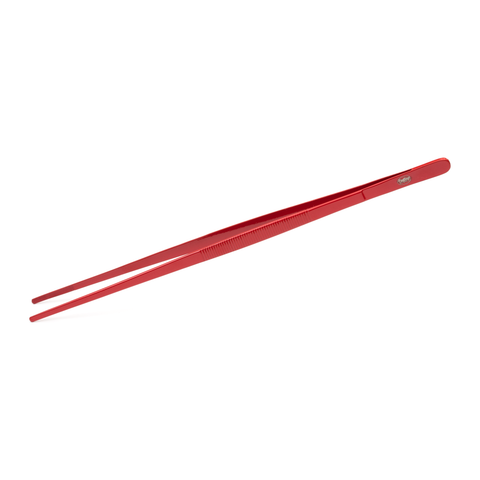Veiled Chameleon
Chamaeleo calyptratus
Natural History
Native to the dry forests and scrublands of the Arabian Peninsula, this arboreal lizard is well-adapted to life in a variety of environments, from lush mountain foothills to arid savannas. It undergoes a relatively short yet dynamic life cycle, characterized by rapid growth and an independent nature from the moment of hatching. Females lay clutches ranging from 20 to over 80 eggs, typically burying them in loose, moist soil where they incubate for around 6 to 9 months. Upon hatching, the young emerge fully capable of fending for themselves, displaying their species’ characteristic bright green coloration. Unlike many reptiles that experience gradual growth throughout their life, this species grows at an exceptionally rapid rate, reaching sexual maturity in just 4 to 6 months. In captivity, individuals may live between 5 to 8 years, with females often having shorter lifespans due to the physiological demands of egg-laying.
A highly visual and solitary species, individuals rely on complex body language and striking color changes to communicate their mood, health, and territorial status. These reptiles are primarily diurnal, spending the majority of their day actively hunting for food, basking in the sun, and navigating the canopy with their specialized feet and prehensile tails. Their signature projectile tongue is a marvel of precision, capable of extending up to twice their body length to snatch fast-moving prey such as insects. Territorial and predominantly solitary, males in particular will aggressively display toward rivals by inflating their bodies, darkening their coloration, and swaying to appear more intimidating. If further provoked, they may gape and even lunge toward perceived threats. When avoiding confrontation, this species exhibits a slow, deliberate locomotion style, often mimicking the movement of leaves in the breeze to avoid detection by predators. Their ability to rapidly shift between green, brown, yellow, and even turquoise shades is influenced by mood, temperature, and social interactions rather than direct attempts at camouflage.
Within their native environment, these reptiles play a significant role in maintaining ecological balance. As highly efficient insectivores, they help regulate populations of various arthropods, controlling outbreaks of species that could otherwise become pests. At the same time, they are an important food source for birds of prey, snakes, and carnivorous mammals, emphasizing their place in a complex food web. Their advanced arboreal adaptations, including fused toes for gripping branches and independently rotating eyes for scanning their surroundings, allow them to exploit microhabitats that many other reptile species cannot. However, habitat destruction and human collection for the pet trade pose threats to wild populations, making responsible captive husbandry even more critical to conservation efforts. By better understanding their natural behaviors and ecological roles, keepers can appreciate the complexity of these remarkable lizards and provide an environment that meets their biological needs in captivity.
Conservation Status
The Veiled Chameleon is currently classified as a species of Least Concern on the IUCN Red List, indicating that it is not considered to be at immediate risk of extinction. This status suggests that wild populations remain relatively stable across their native range, which includes parts of the Arabian Peninsula, particularly Yemen and southwestern Saudi Arabia. Although this designation implies that the species is not currently facing severe declines, it does not mean that the population is immune from future threats. Veiled Chameleons are highly adaptable and can tolerate a range of environmental conditions, which has helped maintain their numbers in the wild. However, habitat changes and human activities still pose potential risks to their long-term survival.
Several threats affect Veiled Chameleon populations, with habitat destruction being one of the most significant. Deforestation, agriculture, and urban expansion in their native range have led to the loss of the dense vegetation and tree cover that these arboreal reptiles rely on. Climate change is another concern, as shifting temperature and rainfall patterns can impact the humidity levels and availability of food sources that are crucial for their survival. Additionally, the species is frequently collected for the international pet trade. Although captive breeding operations have reduced the pressure on wild populations, illegal collection still occurs in some areas. Another threat comes from introduced populations, particularly in places like Florida and Hawaii, where Veiled Chameleons have established feral populations. While these introduced populations do not threaten their native range directly, they can outcompete local reptile species and disrupt ecosystems when introduced to new areas.
Various conservation efforts aim to help protect the Veiled Chameleon and its habitat. Some portions of its native range fall within protected areas, where deforestation and habitat degradation are limited. Additionally, international regulations, such as those imposed by CITES (the Convention on International Trade in Endangered Species of Wild Fauna and Flora), help mitigate excessive collection for the pet trade. Captive breeding programs have played a significant role in reducing pressure on wild populations by supplying the pet market with chameleons bred in captivity rather than those taken from their natural habitat. While no large-scale reintroduction programs currently exist for the Veiled Chameleon, ongoing monitoring of their populations in both native and introduced ranges helps researchers understand the impact of human activity and climate change on this species. Continued enforcement of wildlife protection laws and habitat conservation initiatives will be essential in ensuring that Veiled Chameleons remain a thriving species in the wild.
Native Range
The species is native to the Arabian Peninsula, with its range primarily concentrated in Yemen and southwestern Saudi Arabia. It is found in a relatively restricted distribution compared to some other chameleon species, favoring particular climatic and ecological conditions. Within this range, populations are often localized to specific regions where vegetation and microclimate conditions support their survival. While it has been introduced to other areas outside its native range, particularly in parts of Florida and Hawaii, its natural distribution remains confined to the mountainous and foothill regions of southwestern Arabia.
This species thrives in montane and foothill environments with abundant vegetation, typically inhabiting dry woodlands, scrubby forests, and areas with dense shrubs and small trees. Unlike chameleon species that rely on dense tropical rainforests, it occupies drier environments, often in regions experiencing seasonal fluctuations in rainfall. The species frequently makes use of Acacia trees, other hardy vegetation, and cultivated areas, sometimes occurring near human settlements where gardens and orchards provide suitable structures for climbing and basking.
On a microhabitat level, these chameleons prefer perching on branches and shrubs, using their prehensile tails and specialized feet to navigate through foliage. They are largely arboreal, avoiding extensive contact with the ground unless necessary for egg-laying or territorial movements. Vegetation density plays a crucial role in providing shelter, hunting opportunities, and thermoregulation sites. They tend to favor locations with ample sun exposure, which allows for efficient basking in the morning hours, yet they also seek shade and higher humidity micro-zones during the hotter parts of the day.
The climate of their native range is characterized by a semi-arid to arid environment, with distinct wet and dry seasons that influence their activity patterns. Temperature ranges typically fluctuate from around 68°F at night to highs exceeding 95°F during the day in the warmer months. Seasonal variations bring periods of increased humidity and rainfall, especially during the monsoon season, which temporarily transforms the habitat into a more humid environment. However, much of the year features relatively dry air conditions, meaning the species relies on early morning condensation and occasional rain for hydration.
Elevation plays a key role in defining the species’ ecological niche. It is primarily found at elevations ranging from about 1,600 to 6,500 feet above sea level, favoring the more temperate conditions present in mid- to high-elevation areas compared to the hotter, more arid lowlands. This elevation range provides a mix of temperature fluctuations and seasonal humidity changes, both of which impact the species’ physiological responses and behavior.
Key environmental factors crucial to its survival include access to perching vegetation for climbing and security, adequate foliage cover to avoid excessive heat exposure, and a stable source of moisture. While water is not present in large bodies within its habitat, the species depends on dew, rainfall, and plant surfaces for drinking. The presence of structurally complex vegetation, including both natural and anthropogenic greenery such as cultivated fruit trees, serves an essential role in sustaining populations. These factors collectively define the habitat parameters essential for maintaining healthy individuals in captivity.
Behavior
The Veiled Chameleon is primarily diurnal, meaning it is active during the day and relies heavily on natural sunlight or artificial UVB lighting to regulate its biological processes. In its native range, seasonal temperature and humidity fluctuations influence activity levels, with individuals becoming less active during cooler, drier months. While true brumation does not occur, wild specimens may experience a period of reduced activity during dry seasons when food and water are scarcer. During the breeding season, males exhibit increased mobility as they patrol their territories in search of receptive females, often displaying dramatic posturing and coloration shifts to assert dominance or attract mates.
This species is solitary and highly territorial. In the wild, juveniles disperse soon after hatching, and adults avoid conspecifics outside of mating encounters. Males are particularly aggressive toward one another, engaging in ritualized displays that involve body inflation, color changes, gaping, and lateral posturing to establish dominance without resorting to physical combat. If these displays fail to resolve conflicts, confrontations can escalate to biting and grappling. Females exhibit less territoriality but will still display defensive behaviors when approached by an unwanted male, particularly if they are already gravid. There is no parental care; hatchlings are independent from the moment they emerge and must fend for themselves.
The Veiled Chameleon is highly responsive to changes in its environment. As an arboreal species, it is sensitive to fluctuations in temperature and humidity, often adjusting its position within the canopy to regulate body temperature. It prefers to remain hidden among foliage during the hottest parts of the day, emerging during cooler morning and late afternoon hours to thermoregulate. Changes in lighting conditions induce physiological and behavioral responses, with UVB exposure playing a critical role in calcium metabolism and overall health. When confronted by potential threats, such as predators or humans, it utilizes a range of defensive tactics, including flattening its body against branches, changing coloration to blend with surroundings, and performing deimatic displays—opening its mouth wide and hissing—to deter perceived threats.
This species exhibits unique foraging behavior, relying on its highly specialized tongue to capture prey. The projectile tongue mechanism allows it to extend its tongue more than twice its body length with remarkable accuracy and speed, facilitating the capture of fast-moving insects. Vision plays a crucial role in this process, as each eye moves independently to scan for prey before locking onto a target when striking. In addition to its predatory adaptations, the Veiled Chameleon demonstrates distinct thermoregulatory behaviors, such as darkening its body to absorb heat in the morning and becoming lighter to reflect excess heat during peak temperatures.
Chameleons in captivity often exhibit behavioral differences compared to their wild counterparts. They may become more responsive to human presence, though they remain highly stress-prone and should not be handled frequently. Territorial aggression persists in captivity, leading to heightened stress levels if multiple individuals are housed together, which is strongly discouraged. Captive specimens may exhibit altered hunting behaviors, sometimes adapting to hand-feeding but still requiring live prey for mental and physical stimulation. Environmental enrichment, such as a well-structured enclosure with proper climbing opportunities and live plants, is crucial in preventing stress-related issues. Unlike in the wild, where they must actively search for resources, captive chameleons can become sedentary if their enclosure lacks sufficient environmental complexity. Successful long-term husbandry requires mimicking natural conditions as closely as possible, providing appropriate temperature gradients, hydration methods, and visual barriers to support their natural behaviors.
Captivity Requirements
Enclosure Design
A spacious and well-ventilated enclosure is essential for maintaining healthy conditions. Juvenile Veiled Chameleons can be housed in enclosures measuring at least 18 inches wide, 18 inches deep, and 36 inches tall, but as they grow, they require significantly more space. Adult males should have a minimum enclosure size of 24 inches wide, 24 inches deep, and 48 inches tall, while adult females can be housed in slightly smaller enclosures, although providing the same space as males is ideal. Commercially available screen enclosures are the best choice, as they provide excellent airflow, reducing the risk of respiratory infections, though hybrid enclosures with solid sides can help maintain humidity more effectively in drier climates. Glass enclosures are generally unsuitable because they trap excessive humidity and limit ventilation, which can lead to health complications.
The enclosure must be designed to replicate the species' arboreal nature. A complex vertical layout with numerous climbing branches and vines is required, as Veiled Chameleons rely on climbing to move, thermoregulate, and feel secure. A variety of branch thicknesses should be provided to allow for proper foot grip and joint movement. Live plants such as Ficus, Pothos, and Schefflera not only offer environmental enrichment but also assist in maintaining humidity and providing visual security. Multiple hiding spots should be created using dense foliage to reduce stress. A designated basking area must be positioned toward the top of the enclosure, with branches placed to allow the chameleon to adjust its distance from the heat source. Since Veiled Chameleons can be escape artists, all doors and access points should be secure, and any gaps in the enclosure should be inspected regularly to prevent accidental escapes.
Lighting and Heating
Proper lighting is crucial for the health of Veiled Chameleons. They require high-quality UVB exposure to synthesize vitamin D3, which is vital for calcium metabolism and bone health. A linear T5 HO fluorescent UVB bulb with a rating of 10-12%should be used, such as a Reptisun 10.0 or Arcadia 12%, and it should span at least two-thirds of the enclosure's width. The UVB fixture should be placed 6-12 inches above the basking area to ensure optimal exposure, with a mesh screen between the light and the chameleon to diffuse intensity. Compact or coil UVB bulbs do not provide sufficient coverage and should not be used as the primary source. The UVB bulb must be replaced every 12 months, even if it still emits visible light, as UVB output declines over time. A consistent photoperiod of 12 hours of light and 12 hours of darkness should be followed, with seasonal adjustments to mimic natural changes in day length.
Thermal gradients are essential to allow for proper thermoregulation. The basking temperature should be around 85-90°F for adults and slightly warmer (90-95°F) for juveniles. The ambient temperature should remain between 72-80°F during the day, with a nighttime drop to around 65-70°F. Heat should be provided via a dome fixture with an incandescentor halogen heat bulb positioned above the basking spot, ensuring that the chameleon can regulate its exposure by moving closer or farther away. A reliable thermostat should always be used to prevent overheating, and temperatures should be monitored with digital thermometers placed at both the basking and ambient levels. Under-tank heaters and heat rocks should never be used, as chameleons do not recognize surface heat and can suffer burns.
Substrate and Enrichment
Since Veiled Chameleons are arboreal and rarely descend to the ground, substrate selection is primarily for humidity control and ease of cleaning. A naturalistic substrate mix that retains moderate moisture without becoming excessively damp is recommended. A blend of ReptiChip coconut husk, sphagnum moss, and organic topsoil (free of fertilizers or pesticides) can help maintain proper humidity levels while minimizing bacterial growth. Loose particulate substrates should be spot-cleaned to remove waste and prevent mold buildup. Reptile carpet should never be used, as it harbors bacteria and does not support a natural microclimate.
Enrichment plays a critical role in promoting natural behaviors and reducing stress. A network of climbing structures should be arranged to provide ample pathways throughout the enclosure. Bamboo, natural branches, and artificial vines can be used to create a varied canopy that encourages movement. Multiple live plants should be incorporated to offer shade and additional climbing opportunities. Providing different perch levels allows the chameleon to adjust its exposure to light and heat. Regular rearrangement of enclosure elements can stimulate natural exploration behaviors. Additionally, misting and dripping water sources can encourage drinking responses, offering an additional form of environmental engagement.
Humidity and Hydration
Maintaining the correct humidity levels is vital for proper shedding, hydration, and respiratory health. Veiled Chameleons require a humidity range of 40-60%, with fluctuations throughout the day to mimic natural environmental variations. To achieve this, misting the enclosure two to three times daily is recommended, with each session lasting long enough to allow water droplets to form on the leaves. A combination of a manual spray bottle and an automated misting system can be used to ensure consistency. In drier climates, placing a cool-mist fogger on a timer for nighttime use can help prevent humidity levels from dropping too low. Humidity should be monitored using a reliable digital hygrometer rather than analog gauges, which are often inaccurate.
Proper hydration is accomplished through daily misting and the use of a dripper system that slowly releases water onto foliage, allowing the chameleon to drink water droplets naturally. A shallow water dish is not necessary, as Veiled Chameleons typically do not recognize standing water as a drinking source. If dehydration symptoms such as sunken eyes, wrinkled skin, or an infrequent urate cycle are observed, misting frequency should be increased, and showering sessions (placing the chameleon on a plant in a warm, misted environment) may be necessary to encourage drinking. Ensuring hydration is particularly important during shedding, as inadequate moisture can lead to retained skin, which can cause circulation issues if left unaddressed. By maintaining optimal humidity and hydration practices, keepers can support overall health and prevent common hydration-related complications in Veiled Chameleons.
Diet & Supplementation
In its natural habitat, this species is an opportunistic insectivore, primarily consuming a wide variety of arthropods. Its wild diet consists of crickets, grasshoppers, locusts, beetles, caterpillars, moths, and other invertebrates. Occasionally, it may also consume smaller vertebrates such as lizards or even small birds when the opportunity arises, though these are not a staple of its diet. In times of scarce food resources, it may also ingest plant material, such as flowers, leaves, and fruit, but this occurs infrequently and is more likely incidental rather than an intentional dietary choice. Access to a diverse range of prey allows it to obtain essential nutrients that contribute to its growth, immune function, and reproductive health.
This species employs a sit-and-wait hunting strategy, relying on its excellent camouflage and slow, deliberate movements to remain undetected by both prey and potential predators. It utilizes its highly specialized projectile tongue, which can extend rapidly up to twice the length of its body, to capture insects with a sticky, suction-like mechanism. Vision plays a crucial role in hunting, as it possesses independently moving eyes that provide a nearly 360-degree field of view, allowing it to detect prey from a considerable distance. Unlike some other reptile species, it does not rely on heat-sensing pits or advanced olfactory cues to locate food but instead depends primarily on visual tracking and depth perception to judge distance accurately before striking.
Throughout its life, dietary needs and feeding behaviors change significantly. Juveniles exhibit a higher metabolism and require frequent feedings, often consuming a large volume of small insects daily to support rapid growth. As they mature, their appetite tends to decrease, and adults typically eat on a less frequent basis, with meals spaced out every couple of days. Seasonal variations in the wild, such as fluctuations in insect populations due to temperature and humidity levels, may influence feeding rates, with individuals consuming more food during active, warmer months and reducing intake or even experiencing periods of fasting during cooler or drier seasons.
In captivity, maintaining a nutritionally complete diet poses challenges, primarily due to the limited variety of feeder insects available. A diet composed predominantly of crickets or mealworms alone can lead to deficiencies in essential nutrients such as calcium and vitamin A. To replicate a balanced diet, caregivers must offer a diverse selection of feeder insects, including dubia roaches, black soldier fly larvae, silkworms, hornworms, and appropriately sized grasshoppers. Gut-loading feeder insects with nutrient-dense vegetation, grains, and supplements at least 24 hours before feeding is crucial to ensuring optimal nutrition. Additionally, calcium supplementation with appropriate vitamin D3 levels is necessary, as these reptiles require UVB exposure to properly metabolize calcium and prevent metabolic bone disease. Over-supplementation, however, can lead to toxicity, so dusting prey with calcium powder two to three times per week for adults and more frequently for juveniles is recommended.
Several feeding-related issues can arise in captivity. Food refusal may occur due to stress, illness, improper temperatures, dehydration, or monotony in prey selection. Offering a variety of prey species and using naturalistic feeding strategies, such as free-range feeding that encourages active hunting, can stimulate feeding responses. Hand-feeding is sometimes useful for reluctant individuals but should not become a dependency. Obesity can be a concern if food is offered too frequently, particularly in less active adults, so adjusting feeding schedules based on the reptile’s age, activity level, and body condition is essential. Conversely, malnutrition may result from poor dietary diversity or inadequate supplementation. Encouraging natural feeding behaviors through the use of live prey movement and occasional environmental enrichment, such as placing insects on climbing branches to promote natural foraging, can help maintain both physical and mental health.
By carefully replicating the species’ natural dietary habits and ensuring a nutritionally complete captive diet, keepers can promote long-term health and prevent common husbandry-related illnesses. Attention to feeding frequency, prey variety, environmental conditions, and supplementation needs is crucial for sustaining an active, thriving individual in a controlled environment.
Reproduction
Veiled Chameleons reach sexual maturity between 6 and 12 months of age, though it’s recommended to wait until a female is 18 months of age before introducing a pair in captivity. Sexual dimorphism is evident in this species, as males exhibit larger body size, a more pronounced casque (helmet-like structure on the head), and a broader tail base due to the presence of hemipenal bulges. Females tend to be smaller, have a more modestly developed casque, and lack the pronounced tail base bulge. Courtship behaviors in this species are distinct, with males engaging in conspicuous displays to attract a receptive female. These displays include vibrant color changes, head bobbing, and body inflation, along with lateral posturing to appear larger. If a female is receptive, she will remain calm and allow the male to approach. Conversely, a non-receptive or gravid female displays defensive behavior, such as gaping, darkening in coloration, and swaying to discourage further attempts.
Successful breeding in captivity depends on environmental cues that replicate natural seasonal changes. In the wild, Veiled Chameleons experience temperature fluctuations between cooler and warmer months, which signal the onset of breeding readiness. To encourage reproduction, seasonal temperature variations should be mimicked by slightly lowering the nighttime temperature by a few degrees during the winter months (down to approximately 60-65°F) and gradually increasing it as the breeding season approaches. Photoperiod adjustments also play a role, with an increase in daylight hours signaling the arrival of the reproductive season. Humidity may also need to be slightly adjusted, as a moderate increase in ambient moisture can simulate the seasonal rains associated with breeding activity in their native habitats.
This species follows an oviparous reproductive strategy, meaning that females lay eggs rather than giving birth to live young. For successful copulation, proper pairing is essential. In general, a male and female should only be introduced temporarily and under close supervision to reduce stress and the risk of aggression. Mating enclosures should provide ample arboreal structures, including sturdy branches and foliage to allow for natural behaviors while also giving the female space to retreat if she becomes unreceptive. A proper nesting site is critical for egg-laying; a deep container (at least 12 inches deep) filled with a moist, sandy soil or soil-vermiculite mixture should be placed in the enclosure. A female will instinctively dig a burrow to deposit her eggs, and failure to provide a suitable laying site can result in egg retention, which can be fatal.
Captive breeding presents several challenges, including mate incompatibility, stress-related reproductive suppression, and improper environmental conditions. Some individuals may show no interest in breeding despite otherwise ideal conditions, necessitating changes to temperature, humidity, or photoperiod to better mimic seasonal cues. Stress is a significant factor that can prevent successful reproduction, particularly in females. If a female perceives persistent male presence as threatening, she may refuse to mate or become overly stressed, which can impact her health. A carefully structured introduction process, ensuring that both individuals have acclimated to their surroundings and are in optimal health, improves breeding success. Additionally, nutritional deficiencies, particularly calcium imbalance, can lead to complications such as egg-binding. Providing a well-balanced diet rich in calcium and ensuring proper ultraviolet light exposure is essential for reproductive health.
By carefully managing environmental factors, addressing potential compatibility issues, and ensuring optimal health conditions, breeding Veiled Chameleons in captivity can be a rewarding yet challenging endeavor. Proper planning and close observation throughout the breeding process maximize the likelihood of success while maintaining the well-being of both the male and female.
Incubation & Neonate Care
The species is oviparous, meaning it reproduces by laying eggs. Females typically deposit clutches ranging from 20 to over 80 eggs, depending on factors such as age, size, and health condition. Gravid females require a suitable egg-laying site, such as a deep, moist substrate composed of a mix of organic soil and sand, to facilitate proper oviposition. Failure to provide an appropriate site may result in egg retention, leading to life-threatening complications such as dystocia. After laying, the female covers the eggs with substrate to conceal them from predators. In captivity, it is best to remove the eggs and transfer them to an incubation container to maintain optimal environmental conditions.
Incubation should be conducted at a stable temperature between 75°F to 82°F, with a preferred range near 79°F to promote steady development. Temperature fluctuations should be avoided, as extreme variations may negatively affect embryonic development. The eggs should be placed in a moisture-retentive substrate, such as vermiculite or perlite, mixed with water at a 1:1 ratio by weight to maintain adequate humidity without oversaturation. Proper ventilation is necessary to prevent fungal growth and oxygen deprivation. The incubation period varies, typically lasting between 6 to 9 months, though cooler temperatures may extend this duration, while slightly warmer temperatures may shorten it. This species does not exhibit temperature-dependent sex determination; sex is genetically determined at fertilization.
As the eggs near hatching, they may display signs such as slight dimpling or condensation on the shell. Hatchlings use an egg tooth to perforate the eggshell, a process known as pipping. Once their snout emerges, they will rest before fully exiting the egg, which can take several hours to a day. It is critical not to intervene unless a hatchling is visibly struggling for an extended period, as premature extraction may cause complications. Once hatched, neonates should be removed from the incubation container and housed separately in a controlled environment to ensure optimal development.
Neonate housing should closely mimic natural conditions while maintaining appropriate parameters for growth and health. A small, well-ventilated enclosure with ample vertical climbing structures, such as branches and live or artificial plants, should be provided. Temperature should range from 75°F to 82°F during the day, with a nighttime drop to around 65°F to 72°F. Proper UVB lighting is essential for calcium metabolism and overall health. Humidity should be maintained between 50% and 70%, with regular misting to ensure hydration. Neonates primarily obtain water from droplets on leaves rather than standing water, so a fine misting system or hand misting at least three to four times daily is necessary.
Feeding should commence within the first 24 to 48 hours after hatching. The diet consists primarily of appropriately sized live insects, such as pinhead crickets, fruit flies, and small silkworms. Food should be dusted with calcium supplements without vitamin D3 at every feeding and with a multivitamin supplement twice a week. Hatchlings should be fed multiple times per day to support rapid growth. Monitoring feeding behavior is essential, as failure to eat may indicate stress or improper environmental conditions.
Neonates should be housed separately or in small groups with ample space to reduce competition and aggression, as overcrowding can lead to stress and developmental issues. Handling should be minimized during the early weeks, as excessive stress can impact feeding and overall health. Regular observation is necessary to detect signs of dehydration, shedding difficulties, or metabolic disorders. By maintaining appropriate environmental conditions, hydration, and nutrition, hatchlings can develop into healthy juveniles prepared for long-term captive care.
Conclusion
Successfully keeping this species in captivity requires a deep understanding of its natural behaviors, environmental needs, and physiological requirements. As an arboreal reptile with specialized adaptations, it thrives in well-ventilated, vertically structured enclosures that provide ample climbing opportunities, proper thermal gradients, and controlled humidity levels. Access to high-quality UVB lighting is non-negotiable, as it plays a crucial role in calcium metabolism and overall health. Dietary diversity, including a wide selection of gut-loaded feeder insects and appropriate supplementation, ensures optimal nutrition and helps prevent common deficiencies seen in captivity.
While this species can adapt to varying environmental conditions, it is highly sensitive to stress and improper husbandry. Handling should be kept to a minimum, as prolonged interactions can lead to defensive behaviors and chronic stress. Solitary by nature, these reptiles should never be housed together outside of controlled breeding introductions, as competition and territorial disputes can negatively impact their well-being. Closely monitoring hydration levels is equally critical, as they rely on misting sessions and dripping water to meet their drinking needs. Improper hydration can lead to shedding complications, kidney issues, and other health concerns that are preventable with proper husbandry.
Breeding and rearing offspring come with additional challenges, requiring attention to environmental cues, nutrition, and incubation conditions. Females have demanding reproductive needs, and failure to provide suitable egg-laying sites can result in severe health risks, including egg retention. Proper incubation practices are necessary for successful hatchling development, and neonates require precise environmental control to ensure healthy growth. Once established, juveniles grow rapidly, necessitating frequent feeding and consistent monitoring of their skeletal development.
With careful attention to detail and a commitment to maintaining optimal conditions, keepers can successfully care for this species and observe its fascinating behaviors in a controlled environment. Whether kept as an individual pet or bred in captivity to reduce pressures on wild populations, responsible husbandry enhances the well-being of these reptiles and contributes to conservation efforts by promoting ethical captive breeding. By prioritizing naturalistic enclosures, proper diet, and stress minimization, keepers can create an environment that allows this species to thrive while appreciating its unique adaptations and ecological significance.



